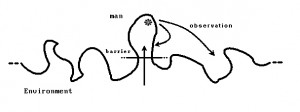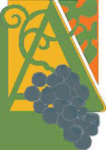Lummi Island Wine Tasting Groundhog Day Weekend 2014
click on images for more detail
We’re back!!!

We got back last night about dinner time. Our little road trip took us south to Napa and environs, where the temperature reached about 75 each afternoon, and near freezing each morning just before sunrise. And when I say “sunrise,” I mean that yes, you could actually see the sun rising into a clear, soon-to-be-blue sky. (see last week’s post with the Morning Hot Air Balloon!). It was really nice to be warm and dry, although with some concerns about climate change…our several days on the road through Washington and Oregon were marked by VERY heavy, dark clouds and drenching, ceaseless rain, which changed abruptly as we descended out of a cloud in the Oregon Siskiyous into deep blue sky and bright sunshine of northern California. Returning along the coast, it was just the opposite. On the plus side, it was absolutely delightful to get such a nourishing sun break. On the down side, California is in a very serious and threatening drought, and they could really use some of our Rain, just as we could use more of their Sun….!
Distinctions
image from looping world
 A fundamental aspect of our human experience is observing-and-distinguishing. We do it all the time. We are designed for it. The bizarre image at left is a representation of how we (“man”– yes it should say “hu-man”) with our symbolic and reflective logic create reality by distinguishing ourselves from the rest of What Is. But that’s just the beginning…our entire lives are a continuous sequence of discernment, creating our Reality one distinction at a time. An “expert” in something is someone who has learned to make lots and lots of subtle distinctions about a particular realm of experience. What I have just learned is that with regard to wine, I have a Long Way to Go to sort out how wines tell us about their regions.
A fundamental aspect of our human experience is observing-and-distinguishing. We do it all the time. We are designed for it. The bizarre image at left is a representation of how we (“man”– yes it should say “hu-man”) with our symbolic and reflective logic create reality by distinguishing ourselves from the rest of What Is. But that’s just the beginning…our entire lives are a continuous sequence of discernment, creating our Reality one distinction at a time. An “expert” in something is someone who has learned to make lots and lots of subtle distinctions about a particular realm of experience. What I have just learned is that with regard to wine, I have a Long Way to Go to sort out how wines tell us about their regions.
A New Direction
“New Direction” by Jonas Gerard
 As you might expect, we did do a little wine tasting on our trip south– Napa, Russian River, Dry Creek, Willamette Valley– and enjoyed much of what we experienced. But for some reason, as I write the first blog of aught-fourteen, I am feeling an itch to move away from the experts’ wine ratings and “professional” notes in search of a set of descriptions that is more focused on the where and who of what we are tasting. Our interest in wine has from the very beginning (not all that long ago, ten years or so) been associated with the notion that every wine bears the footprint of the very particular patch of ground where the grapes grew, and the fingerprints of the particular person who made the wine. And while there is some information about these things in the Critics’ ratings and tasting notes, a deeper perspective on each wine’s unique place in the world is usually secondary to the subjective description of how the wine tastes. So our goal for the coming year is to move from the standard “notes of cucumber with haunting hints of sarsaparilla” to a more objective description of how a particular wine does or does not represent the very particular place it comes from.
As you might expect, we did do a little wine tasting on our trip south– Napa, Russian River, Dry Creek, Willamette Valley– and enjoyed much of what we experienced. But for some reason, as I write the first blog of aught-fourteen, I am feeling an itch to move away from the experts’ wine ratings and “professional” notes in search of a set of descriptions that is more focused on the where and who of what we are tasting. Our interest in wine has from the very beginning (not all that long ago, ten years or so) been associated with the notion that every wine bears the footprint of the very particular patch of ground where the grapes grew, and the fingerprints of the particular person who made the wine. And while there is some information about these things in the Critics’ ratings and tasting notes, a deeper perspective on each wine’s unique place in the world is usually secondary to the subjective description of how the wine tastes. So our goal for the coming year is to move from the standard “notes of cucumber with haunting hints of sarsaparilla” to a more objective description of how a particular wine does or does not represent the very particular place it comes from.
However…

So last fall I tasted two cabs from the same California producer from two adjacent appellations, and was struck by the differences between them. Given that they were both cabs from the same producer, but from subareas with slightly different characteristics, I thought the distinctions between them might be interesting to our clientele. However, it turns out that there are no professional notes on the wines, and no useful details from the producer about the specific areas where the grapes for each were grown. Okay, I thought, I will just taste them again, and make my own notes! What could possibly go wrong?? Well, what went wrong was that they were cold and freshly opened, and therefore moving targets, and I was forced to admit (going back to the first paragraph) that my vocabulary of tasting metaphors is more limited than I had hoped! All YOU need to know is that we will be pouring four cabs this weekend– two from California, one from Argentina, and one from Washington, and the question is: what difference does terroir make?
This week’s tasting: Four cabs and an Italian chardonnay
Cantina Altarocca Albaco Bianco Orvieto ’10 Italy $18
Chardonnay, Grechetto blend. Bright straw yellow. Aromas of fresh fruits acacia flowers and sweet wood. Dry, smooth, elegant and complex in the mouth with notes of ripe fruits and spices. Orvieto is known for its deep layers of volcanic tufa, a soft rock deposited a hundred thousand years ago from volcanic eruption. Erosion has cut away all the surrounding rock, leaving a bluff hundreds of meters high, and from which over the centuries have been cut layers and layers of storerooms, workshops, and dovecotes.
Andeluna Cabernet Sauvignon 1300 ’11 Argentina $11
Bright red-ruby. Aromas of blackberry syrup, licorice and menthol. Silky, suave, broad and quite dry. Finishes with broad tannins, a bit of warmth and good length. The rich, alluvial soils of the Uco Valley at 4000 feet in the Andes contain pockets of stony, sandy, loam and clay soils. The high altitude conditions and poor soil require the vines to struggle, producing low yields of exceptionally high quality fruit.
Rodney Strong Alexander Valley cab ’11 California $21
14.5% alc. Shy aromas of dark plum, black currant, dried fig, and toasted oak, mildly assertive tannins, rather short finish. Alexander Valley wines are known for their rich, fleshy mouthfeel, voluptuous texture, and characteristic chocolate notes.
Rodney Strong Sonoma cab 2011 California $18
13.5% alc. Plummy aromas precede palate of bright raspberry with hints of ripe peach, apricot, and moderate oak.
Sonoma’s extended growing season allows Cab to achieve full ripeness and softer tannins than in warmer grape growing regions, often showing ripe cassis, cherry, and berry fruit with hints of eucalyptus and cedar.
Masquerade Cabernet Sauvignon Red Mountain ’09 Washington $28
Like an orchestra with every instrument in its place, this lovely wine will seduce you with its harmony of flavor, texture, balance, and length. Very, very nice. Red Mountain Cabernets are more structured than fruit-driven; nightly temperatures below 50 °F preserve acid levels, while daytime temperatures averaging 90 °F generally bring grapes to full ripeness.
If you enjoyed this post, please consider to leave a comment or subscribe to the feed and get future articles delivered to your feed reader.

 2072 Granger Way
2072 Granger Way